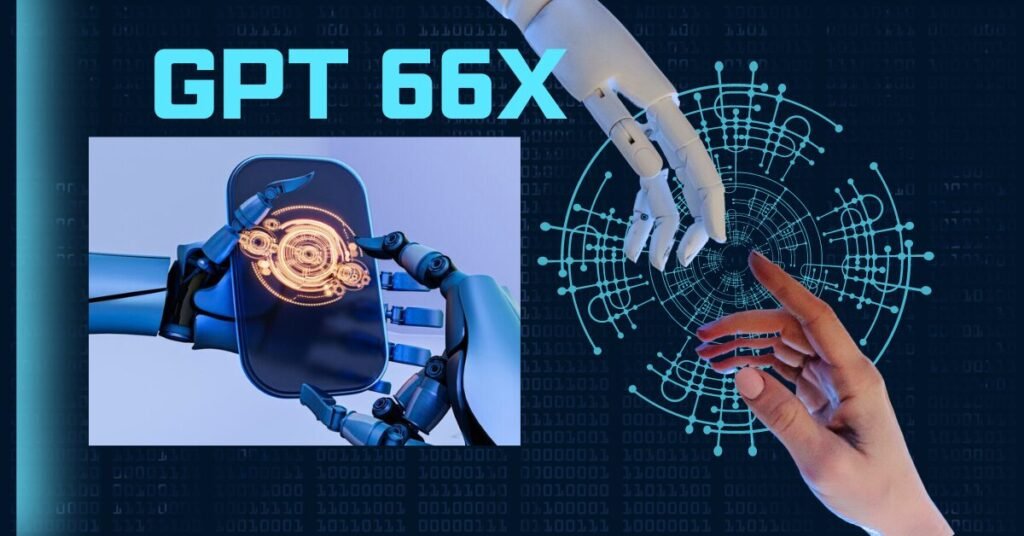GPT66x is developed by OpenAI, promises to push the boundaries of natural language processing (NLP) and redefine the capabilities of AI systems. In this comprehensive blog post, we will be exploring its architecture, applications, potential impact on various industries, and ethical considerations.
What is GPT-66X?
This period of artificial intelligence is full of breakthroughs that continue to shape the way we interact with technology. Among the latest innovations is GPT-66X, an advanced process of the renowned GPT series. GPT-66X, AI writer from OpenAI, surpasses mere text generation.
This “super-powered writer” learns from vast datasets, enabling it to craft diverse content from poems to coding, engage in conversation, and even spark creative ideas. It acts as a versatile communicator and collaborator, constantly evolving with new information and feedback. While still under development, its potential to revolutionize fields like customer service, content creation, and education is undeniable, but responsible use is crucial to address potential biases and misinformation risks.
Understanding the Evolution of GPT-66X
Before we talk about the specifics of GPT-66X, it’s important to trace the evolution of the GPT series. The journey began with GPT-1, a model capable of generating coherent and contextually relevant text based on a given prompt. Subsequent versions, including GPT-2 and GPT-3, expanded the model’s scale, demonstrating unprecedented language understanding and generation capabilities. GPT-3, in particular, showcased the power of transformer-based architectures in handling diverse tasks, from language translation to code generation.
What can GPT-66X Do? unique features
GPT-66X builds upon the successes of its predecessors, introducing key enhancements that mark a significant leap in AI capabilities. The “X” in its name signifies the extraordinary scale and complexity of this model. Let’s explore the key features that make it a game-changer:
1. Scale and Parameters
GPT-66X boasts an astonishing number of parameters, far surpassing its predecessors. This model enables more nuanced understanding of context, leading to improved text generation and comprehension. The absolute magnitude of parameters contribute to its ability to handle complex tasks across diverse domains.
2. Multimodal Capabilities
Unlike previous models that primarily focused on text-based inputs, GPT-66X introduces multimodal capabilities, allowing it to process and generate content based on a combination of text, images, and possibly other data types. This evolution opens up new possibilities for applications in fields such as computer vision and multimedia analysis.
3. Fine-tuning and Specialization
It offers enhanced fine-tuning options, enabling developers to tailor the model to specific industries or use cases. This flexibility allows for improved performance in specialized tasks, making it a versatile solution across a wide range of applications.
The Applications of GPT-66X Across Industries
The versatility of GPT-66X extends its applicability to various industries, revolutionizing the way businesses operate and people interact with technology. Here are some key sectors where it is poised to make a substantial impact:
1. Healthcare
Its advanced natural language processing capabilities can be leveraged in medical data analysis, assisting healthcare professionals in extracting valuable insights from patient records, research papers, and clinical notes. Additionally, it can enhance communication between healthcare providers and patients through intelligent virtual assistants.
2. Finance
In the financial sector, it can be employed for tasks such as fraud detection, risk assessment, and automated customer support. Its ability to understand complex financial documents and market trends can contribute to more informed decision-making in investment and financial planning.
3. Education
GPT-66X’s multimodal capabilities make it a valuable tool in educational settings. It can assist in content creation, personalized tutoring, and language learning by providing dynamic and engaging materials. Additionally, the model’s ability to comprehend and generate content across various subjects enhances its utility in educational applications.
4. Media and Entertainment
Content creation in the media and entertainment industry can benefit immensely. From generating scripts and storylines to creating realistic dialogues and scenes, the model’s creativity and contextual understanding contribute to the production of high-quality and engaging content.

What are the benefits of GPT-66X?
1. Enhanced Language Understanding
GPT-66X demonstrates improved language understanding and can generate more contextually relevant responses compared to its predecessors.
2. Advanced Creativity
The model can generate creative and contextually coherent content, making it useful for tasks such as creative writing, brainstorming, and content generation.
3. Broader Knowledge Base
It benefits from a larger and more diverse training dataset, enabling it to have a broader knowledge base and a better grasp of various topics.
4. Reduced Bias
Efforts have been made to mitigate biases in GPT-66X, resulting in improved fairness and reduced likelihood of generating biased or controversial outputs.
5. Fine-Tuning Capabilities
It allows for more effective fine-tuning, enabling users to customize the model for specific tasks and domains, enhancing its adaptability.
What are the challenges of GPT-66X?
1. Computational Resources
It may require significant computational resources, making it less accessible for users with limited computing power.
2. Ethical Concerns
Despite efforts to reduce biases, GPT-66X may still exhibit unintended biases, raising ethical concerns about the potential impact on decision-making and content generation.
3. Lack of Real-time Interaction
Due to the computational demands, real-time interaction may be limited, affecting its suitability for certain applications requiring instantaneous responses.
4. Limited Understanding of Nuances
While improved, it may still struggle with understanding nuanced or highly specialized topics, leading to inaccuracies in its responses.
5. Potential for Misinformation
Like any large language model, GPT-66X can generate information that may be inaccurate or misleading, requiring careful verification when used for critical tasks.
Ethical Considerations And Challenges
GPT-66X raises ethical considerations and challenges that warrant careful attention. Some of these include:
1. Bias and Fairness
The massive amount of data used to train GPT-66X may inadvertently embed biases present in the training data. Ensuring fairness and mitigating biases in AI systems remains a critical challenge, requiring ongoing efforts to address issues related to gender, race, and cultural representation.
2. Security Concerns
The scale and complexity of GPT-66X raise concerns about potential malicious uses, including the generation of convincing fake content. OpenAI and the broader AI community must work collaboratively to develop safeguards and countermeasures against misuse.
3. Transparency and Explicability
The intricate nature of GPT-66X’s architecture may pose challenges in explaining its decision-making processes. Striking a balance between model complexity and interpretability is crucial for fostering trust among users and business stakeholders.
Conclusion
GPT-66X stands at the forefront of AI innovation, showcasing the continuous evolution of natural language processing capabilities. Its extraordinary scale, multimodal capabilities, and versatility across industries position it as a transformative force in the AI landscape. As we embrace the possibilities presented, it is imperative to address ethical considerations and challenges, ensuring responsible and beneficial deployment.
In the coming years, the widespread adoption of this technology is likely to reshape industries, drive innovation, and redefine the boundaries of what AI can achieve. As developers, researchers, and policymakers navigate this frontier, a collaborative and responsible approach will be crucial to harnessing the full potential for the betterment of society.
Frequently Asked Questions
1. What is GPT-66X and how does it differ from previous versions?
GPT-66X is the latest iteration of the Generative Pre-trained Transformer (GPT) series developed by OpenAI. It represents a significant advancement over its predecessors, featuring enhanced language understanding, improved contextual reasoning, and a larger training dataset.
2. What applications can benefit from GPT-66X?
GPT-66X finds applications across various domains, including natural language processing, content generation, chatbots, code completion, language translation, and more. Its advanced capabilities make it suitable for tasks requiring a deep understanding of context and nuanced language comprehension.
3. How large is the model and what are the hardware requirements for deploying GPT-66X?
GPT-66X is a substantial model with a significant number of parameters, necessitating robust hardware for efficient deployment. While the exact hardware requirements may vary based on the application and workload, generally, high-performance GPUs or specialized hardware accelerators are recommended for optimal performance.
4. Can GPT-66X be fine-tuned for specific tasks?
Yes, GPT-66X supports fine-tuning on specific tasks. This allows users to adapt the model to their specific needs, enhancing its performance on domain-specific data. Fine-tuning is a powerful feature that enables customization without the need to train a model from scratch.
5. What steps are taken to address ethical considerations and biases in GPT-66X?
OpenAI is committed to addressing ethical concerns and biases in AI models, including GPT-66X. They implement research and engineering practices to reduce both glaring and subtle biases. Additionally, OpenAI encourages user feedback to improve the model’s behavior and minimize unintended biases. The organization aims to make AI systems like GPT-66X safe, reliable, and accessible for a wide range of users.




Pingback: The Ultimate Guide to GPT66X : Unveiling Its Secrets
Pingback: Unleashing the Power of GPT 66X: A Comprehensive Guide